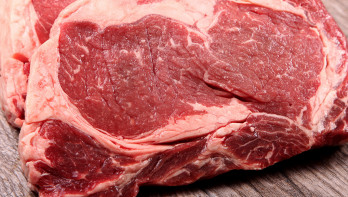Analysis Cattle & Beef
Beef prices remain fairly stable
The beef market remains strong. The market wonders how long things can continue to be so favorable, but so far the decrease in demand appears to be manageable. The market is already looking ahead to the holidays. Meanwhile, the supply of cattle remains tight.
The price of beef in the Netherlands continues to move sideways. The U-quality is still €4.97 and the P-quality remains €3.18.
Good business is still being done in the beef market, as heard in the market. In recent weeks, it was reported that sales were going well in the beef market. Especially to Southern Europe, a lot of meat was exported. However, slaughterhouses provided some nuance. Once the weather turned colder, it was expected that sales would decline slightly. The good sales were a result of the nice late summer, which led to continued barbecuing later in the season. Additionally, the nice weather led to terraces being visited extensively at the end of August and beginning of September.
Now that it's colder, some things have changed in the market. The decrease in demand is manageable for now. In the market, it is heard that it has become somewhat more difficult to sell luxury cuts. There is some price pressure on products like sirloins and ribeyes. Insiders in the market are slowly starting to shift their focus to the month of December. Companies are cautiously building up stocks for the holidays. Considering that luxury meat cuts are often aged for several weeks, it's not surprising that the market is already looking two months ahead. An additional effect is that this prevents a sharp decline in prices of luxury cuts. The sale of trimmings continues to run fairly well.
Supply remains tight
Although demand remains stronger than expected, it is mainly a limited supply that keeps prices stable. Livestock traders indicate that there is still a shortage in the market. This applies to both cull cows and luxury beef cattle. It is heard in the market that the supply of cull cows is currently limited. Due to the weak supply, some traders mention that you can currently earn more from dairy cows than from beef cattle. The high milk prices in recent months have led dairy farmers to choose to milk their cows for a longer period. Less productive cattle are therefore not quickly sent to slaughter.
However, this does not mean that beef cattle are readily available. Livestock traders and slaughterhouses mention that it is not easy to obtain sufficient cattle. According to insiders in the market, the bottleneck occurs early in the chain. Due to the outbreak of blue tongue disease in Europe, countries like France have closed their borders to both import and export. This makes it difficult for feedlots to obtain enough cattle.




